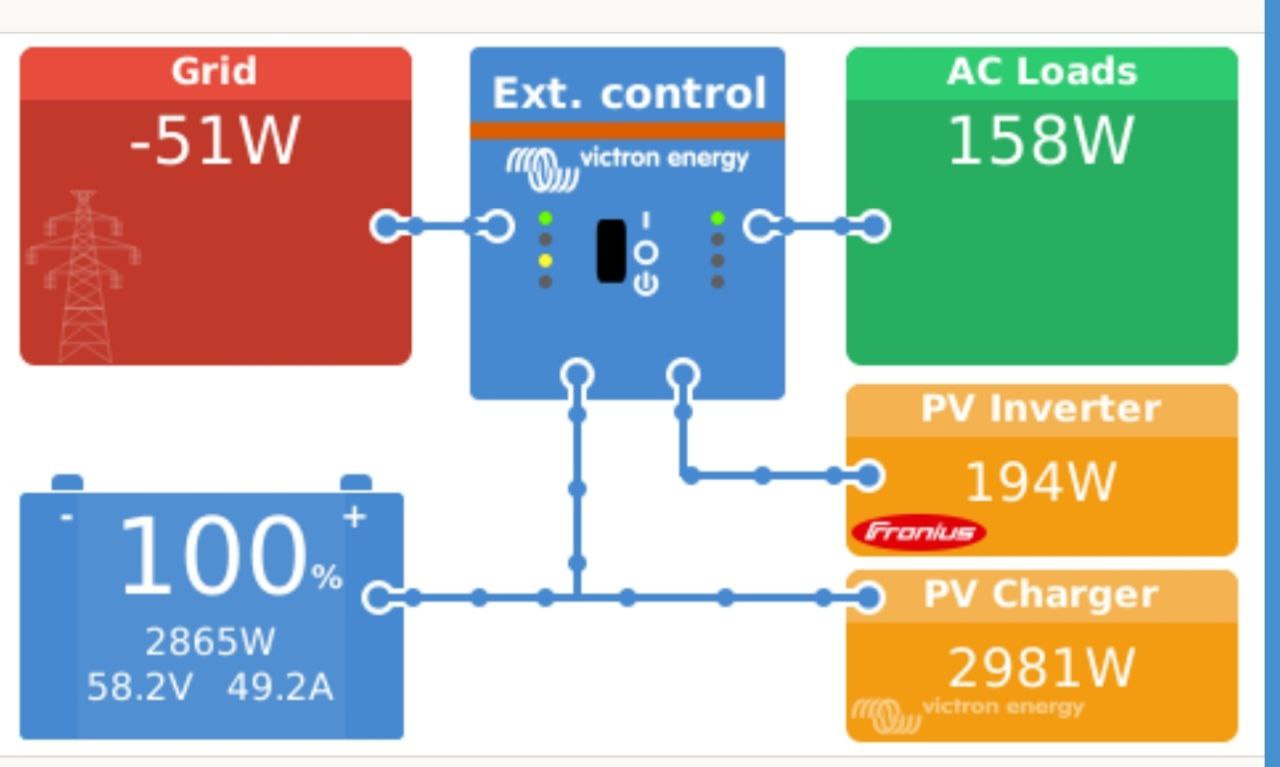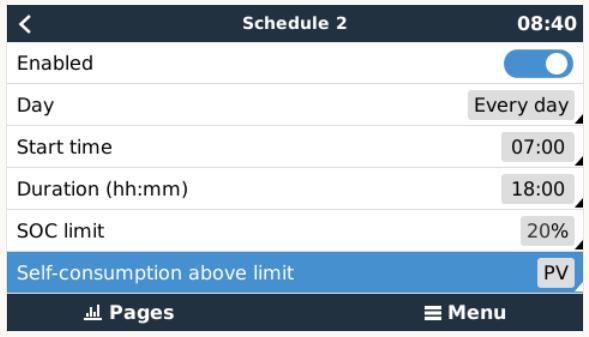OK, I have racked my brain and I can't think of a way to do this, I'm hoping I have missed something?
So there is an MPII 10K, MPPT, PV inverter (AC Out 1), and a Zappi EV charger.
The Zappi has a CT on the grid and will soak up any export (up to 7.2 kW) assuming a car is connected.
So the customer wants to stop / pause battery charging and export all solar to the Grid which the Zappi will then charge the car with. I thought simple enough, but seemingly not.
- First I tried "Inverter only" - That stops all Export.
- Second I set the DVCC Charge Current to 0 - This partially worked, all the PV Solar was exported but the MPPT Solar continued to charge the battery.
Is there a way to also export the MPPT Solar? It behaves as desired when the battery SOC is 100%.


